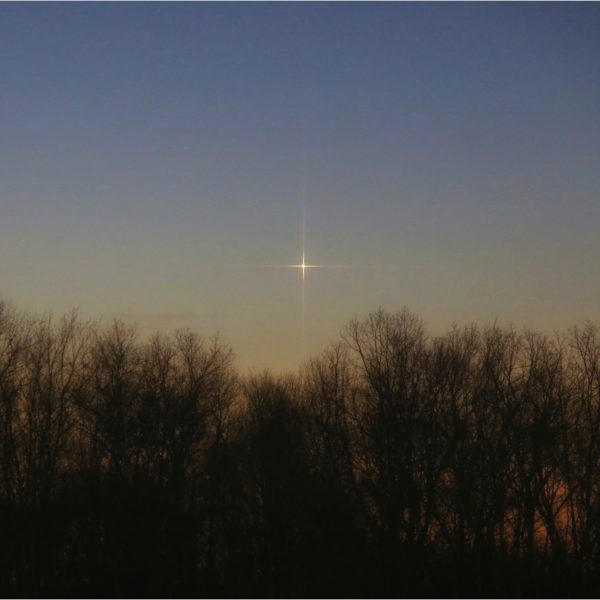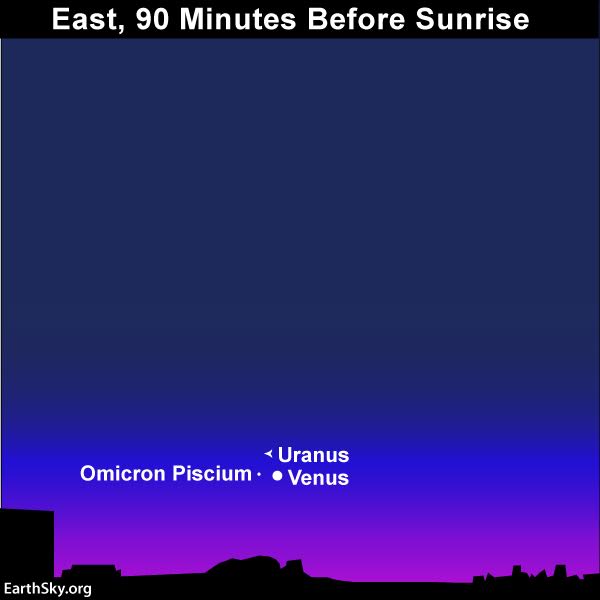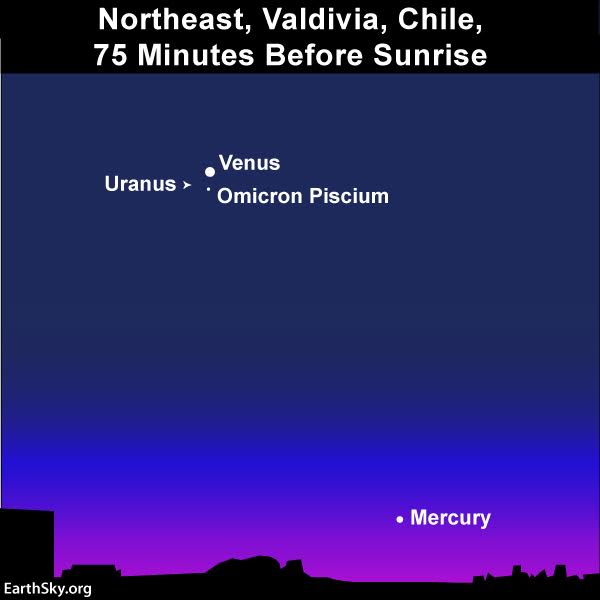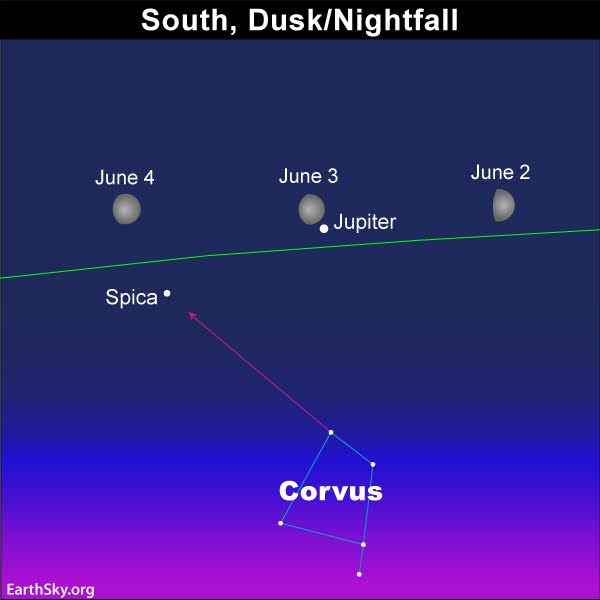
Image at top is from our friend Tom Wildoner at LeisurelyScientist.com. It’s the planet Venus in the east at dawn. Tomorrow morning – June 3, 2017 – Venus reaches a milestone in its present apparition in the morning sky. The planet will be at its greatest western elongation, or greatest angular distance west of the sun on our sky’s dome. Watch for Venus to blaze mightily in the east this weekend, as dawn climbs into the sky.
At this elongation, Venus swings 46o west of the sun. After June 3, Venus will slowly but surely fall sunward (toward sunrise) and ultimately pass behind the sun (at superior conjunction) on January 9, 2018. That’s when this world will transition out of the morning sky and into the evening sky.

On these early June mornings, the planet Uranus snuggles up closely with Venus before dawn. Uranus is too low in the morning sky to be seen by the eye alone, but if your sky is perfectly clear and free of city lights – and if you look in those magic moments when Venus and Uranus are relatively high in the sky, yet relatively free of dawn’s early light – you might glimpse Uranus with binoculars.
Uranus is some 10,000 times fainter than Venus. But don’t mistake the star Omicron Piscium for this faint planet. Omicron Piscium and Uranus both share the same binocular field with Venus, but this 4th-magnitude star (which you may see with the unaided eye) is about four times brighter than Uranus yet 2,600 times fainter than Venus. See sky chart below.

Because Venus orbits the sun inside of Earth’s orbit, this inferior planet always stays relatively close to the sun in our sky. Venus can never be opposite the sun, like a full moon. Venus can’t even be 90o from the sun, as the half-lit moon is at its first quarter or last quarter phase.
At its greatest elongation, Venus is only about half the angular distance of a quarter moon from the sun.

Although Venus extends as far as 46o west of the sun from everyplace worldwide, that does not mean Venus rises an equal amount of time before sunrise. At the Earth’s equator (0o latitude), Venus rises a solid 3 hours before the sun. However, at mid-northern attitudes, Venus rises some 2 hours before sunrise; and at mid-southern latitudes in the Southern Hemisphere, Venus rises about 4 hours before sunup. Click here for recommended almanacs; they can give you the rising times of Venus, Mercury and the sun in your sky.
There are two reasons why Venus rises sooner before sunrise at more southerly latitudes. First, the ecliptic – pathway of the sun, moon and planets – hits the morning horizon at a steep angle in the Southern Hemisphere. Meanwhile, it hits at a shallower angle at northerly latitudes in the Northern Hemisphere.
Moreover, Venus lies somewhat south of the ecliptic, causing Venus to rise all the earlier in the Southern Hemisphere, but all the later in the Northern Hemisphere.

By late July 2017 at mid-northern latitudes, Venus will be rising about 3 hours before the sun. That’s strange because Venus will be closer to the sun on the sky’s dome (39o west of the sun in late July 2017, in contrast to 46o west of the sun in early June). Closer to the sun, but rising sooner before sunrise … how does that happen? The answer is the ecliptic in the July morning sky will be steeper with respect to the predawn horizon than in early June. The angle of the ecliptic will more than make up for Venus’ shrinking elongation.
By the way, there’s something wonderful to see in the evening sky this weekend, too.

Bottom line: June 3, 2017 marks Venus’ greatest western (morning) elongation, but – for us in the Northern Hemisphere – not necessarily the maximum time period between Venus-rise and sunrise.











